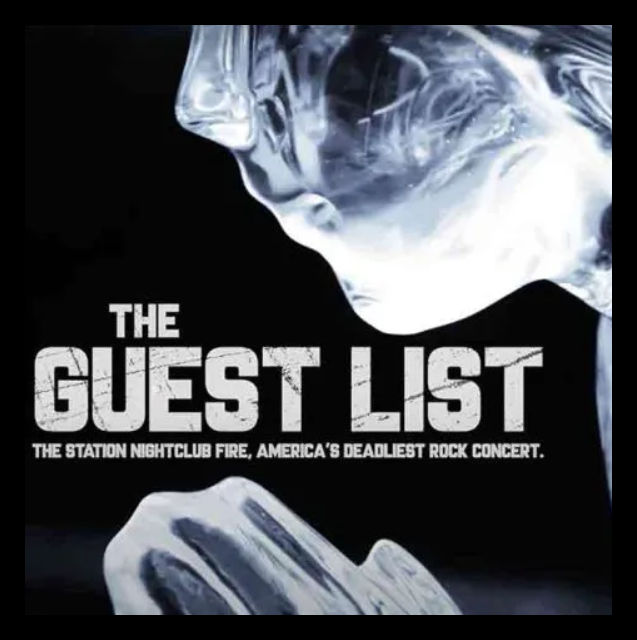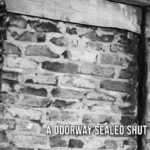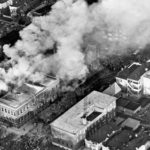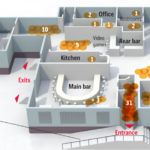It’s hard to believe that 19 years have passed since the fire at the Station Nightclub in West Warwick, Rhode Island – the fire occurred on February 20, 2003. One hundred people died and more than 200 were injured, and non-code-compliant conditions played a role.
NIST – National Institute of Standards and Technology investigated the Station Nightclub Fire and published a list of 10 recommendations based on their findings. Recommendation 5 was related to egress:
Recommendation 5. Occupancy Limits and Emergency Egress: NIST recommends that the factor of safety for determining occupancy limits of all new and existing nightclubs be increased in the model codes in the following manner, and that state and local authorities adopt and aggressively enforce the following provisions:
a) Within the model codes, establish the threshold building area and occupant limits for egress provisions using best practices for estimating tenability and evacuation time; and, unless further studies indicate another value is more appropriate, use 1-1/2 minutes as the maximum permitted evacuation time for nightclubs similar to or smaller than The Station.
b) Compute the number of required exits and the permitted occupant loads assuming at least one exit (including the main entrance) will be inaccessible in an emergency evacuation.
c) For nightclubs with one clearly identifiable main entrance, increase the minimum capacity of the main entrance to accommodate two-thirds of the maximum permitted occupant level (based upon standing space or festival seating, if applicable) during an emergency.
d) Eliminate trade-offs between sprinkler installation and factors that impact the time to evacuate buildings.
e) Require staff training and evacuation plans for nightclubs that cannot be evacuated in less than 1-1/2 minutes.
f) Provide improved means for occupants to locate emergency routes—such as explicit evacuation directions prior to the start of any public event, exit signs near the floor, and floor lighting—for when standard exit signs become obscured by smoke.
A new documentary about the fire debuted yesterday, on the 19th anniversary of the fire, and it will be repeated on the REELZ network. I have not been able to watch it yet (I don’t have cable!), but I will report back on future opportunities for streaming the movie. You can watch the trailer below, or on YouTube.
You need to login or register to bookmark/favorite this content.










It takes a little different look at the incident.
It covers a few more aspects of the incident.
Seemed to leave out, or emphasize, a few of the known reasons people did not get out.
The show at one point lists all the companies/ people sued
Here is a short list
As of September 2008, at least $115 million in settlement agreements had been paid, or offered, to the victims or their families by various defendants:
In September 2008, The Jack Russell Tour Group Inc. offered $1 million in a settlement to survivors and victims’ relatives,[20] the maximum allowed under the band’s insurance plan.[21]
Club owners Jeffrey and Michael Derderian have offered to settle for $813,000,[22] which is to be covered by their insurance plan due to the pair having bankruptcy protection from lawsuits.[22]
The State of Rhode Island and the town of West Warwick agreed to pay $10 million as settlement.[23]
Sealed Air Corporation agreed to pay $25 million as settlement. Sealed Air made flammable packaging foam that was improperly installed in the club, which required acoustic foam designed for this purpose.[24]
In February 2008, Providence television station WPRI-TV and their then-owners LIN TV made an out-of-court settlement of $30 million as a result of the claim that their video journalist was said to be obstructing escape and not sufficiently helping people exit.[25]
In March 2008, JBL Speakers settled out of court for $815,000. JBL was accused of using flammable foam inside their speakers. The company denied any wrongdoing.[26]
Anheuser-Busch has offered $5 million.[27] McLaughlin & Moran, Anheuser-Busch’s distributor, has offered $16 million.[27]
Home Depot and Polar Industries, Inc. (a Connecticut-based insulation company) made a settlement offer of $5 million.[28]
Providence radio station WHJY-FM promoted the show, which was emcee’d by its DJ, Mike “The Doctor” Gonsalves (who was one of the casualties that night). Clear Channel Broadcasting, WHJY’s parent company, paid a settlement of $22 million in February 2008.[29]
American Foam Corporation who sold the insulation to The Station nightclub agreed in 2008 to pay $6.3 million to settle lawsuits relating to the fire.[30]
They kept talking about deaths at concerts,,, but they keep happening, not all because of fire.
Thanks for all the info, Charles!
– Lori
https://www.theguestlistfilm.com/
Glad to see these common sense suggestions from NIST. There are also emerging technologies around egress that include audible and visual technologies leading evacuees to the best exit away from the danger.
The most effective tool would and still will continue to be sprinklers in conjunction with proper egress. The Life Safety Code updates started to address this, then seem to have been watered down? Originally any bar that wished to have live events with capacity over 100 were required to be sprinklered, “new” occupancies had no min. occupant load. Now it is limited to Dance Halls, Discotecheques, Nightclubs, or venues with festival seating. Sadly none of these terms are defined. “Bars with live entertainment” were included in the 2006 text, but that was later removed. Now it is up the AHJ to determine who meets these undefined uses.
That’s really interesting, Adam. Thanks for pointing this out!
– Lori